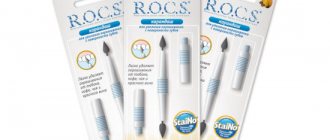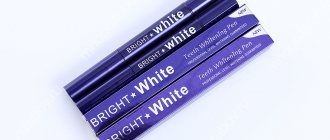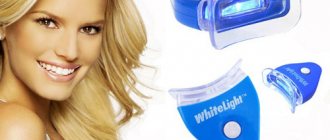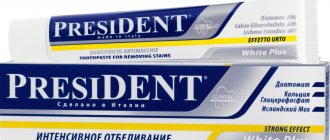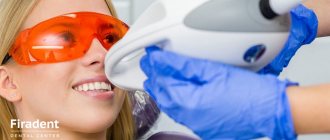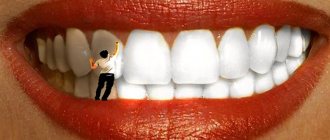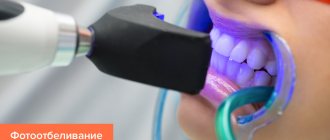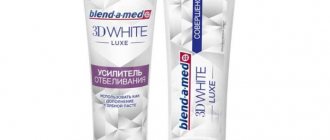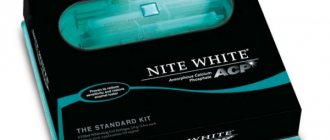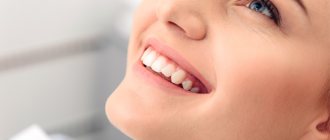Julia looked at herself... and decided that she was not beautiful enough. I started to correct the situation with my teeth.
During quarantine, we did live broadcasts with different cool speakers - and I got involved. I loved this format.
But - surprise - because of these broadcasts I encountered new old problems. Again, I didn’t like the way I looked :) In this case, I looked on camera. I reviewed my “film” wardrobe (if you’re in black or white, the camera is “off-putting”, you need something neutral), I reviewed my makeup (my skin is too light, and the camera “offsets” again), now I’m making my face tone warmer, highlighting eyes more intense) and found points in the apartment where the lighting makes me happy.
But there was a problem that you couldn’t fix on your own. For example, yellowish teeth -).
I decided to take this very problem to dentist Gleb Pekli at his clinic Insmile Dental Lounge, which we have already written about and who is a doc, a pro and a specialist in this matter. At the end of June I went for a consultation. It wasn’t scary - it seems like I already know everything about whitening, I did it seven years ago. Well, almost not scary :)
This is what the teeth looked like when I showed Gleb:
Teeth before whitening
It seems not critical, but I remember how much I liked the color of my teeth seven years ago, just after that Philips Zoom whitening. I wanted to return that feeling.
General picture "before":
At the consultation, Gleb told me that I have a gray-yellow type of enamel. (There are three of them in total - white, a very rare white-blue and gray-yellow. Gray-yellow is characteristic of approximately 70% of the inhabitants of Russia). With this type, whitening with Philips Zoom alone will not be enough. To make your teeth as white as possible, after the procedure you need to use the Opalescenes home system. It is, of course, not as powerful as Zoom, but it works gradually, day after day.
What is photo teeth whitening?
Many people know the meaning of the Greek word “photos”, so they guess that light is involved in photobleaching. But what role does he play? Maybe this will be a discovery for some, but teeth are “translucent” with the usual halogen, ultraviolet or LED lamps. Can they change the color of teeth? Obviously not. Photobleaching involves the use of a special gel with 30–35% hydrogen peroxide, the effect of which is enhanced by light, which significantly speeds up the bleaching process.
Professional methods for lightening tooth enamel
This group of methods includes photo and laser whitening, Magic White and Beyond enamel lightening, as well as Air Flow teeth cleaning and others. Their main advantage is that they are performed under the supervision of a doctor, are performed efficiently and guarantee longer-lasting results. If you follow all the specialist’s recommendations after the procedure, the result can be maintained for several years.
Laser enamel lightening
This is a professional method that not only makes teeth whiter, but also strengthens them. During the procedure, their structure does not change, the acid-base balance remains unchanged. The result is very strong - on average, lightening occurs by eight shades or more, and it lasts for five years or more.
During the procedure, a special gel based on hydrogen peroxide or urea is applied to the tooth surface, which is exposed to laser radiation that activates the whitening system. The components of the gel begin to disintegrate, atomic oxygen is released, which, being a strong oxidizing agent, destroys color pigments that cause undesirable coloring. As a result, teeth become whiter, the enamel thickens by an average of 30-40%, and bacteria are also destroyed. Photos of teeth before and after laser whitening are shown below.
Teeth whitening Zoom
This is a progressive technique for changing the shade of tooth enamel, which is widely used throughout the world. A gel based on 25 percent hydrogen peroxide is applied to the teeth and treated with light from a special Zoom lamp. The peroxide decomposes, oxygen atoms are released, destroying the coloring pigments. Upon completion, the enamel becomes 8-12 shades lighter, as can be seen below in the photos before and after Zoom whitening. It is worth noting that, unlike laser, this method does not strengthen the enamel, but it is slightly cheaper in cost.
Enamel lightening Beyond Polus
During the procedure, the doctor applies a proprietary gel to the teeth and treats it with a special cold light lamp. The gel begins to release atomic oxygen, and a change in shade occurs. The photos before and after the Beyond Polus procedure show that the teeth become significantly lighter – by an average of 8-10 shades. Upon completion, they are coated with a fluorine-containing compound to strengthen the structure. The advantage of a cold light lamp is that burns to the soft tissues of the oral cavity are excluded, because the lamp practically does not emit ultraviolet and infrared radiation.
Magic White
In just 21 minutes, this method will make your teeth 4-8 shades lighter. It differs in that it uses 0.1% carbamide peroxide rather than hydrogen peroxide. The procedure is absolutely painless and does not cause increased sensitivity. In the photos below you can see the results before and after teeth whitening using the Magic White method.
The results last for several months, not years, but following a special white diet will help delay the next procedure. The cost of this method is significantly lower than those described.
Air Flow Cleaning
This technique does not involve the use of any oxidizing agents, as in previous methods. It serves to remove plaque and age spots from the surface of the teeth. To do this, they are exposed to a powerful jet of an abrasive agent (fine soda powder) with air.
Despite the fact that the result is up to four to six tones, as can be seen in the photo before and after Air Flow whitening, its undoubted advantage is the absence of increased sensitivity, as well as the pleasant smoothness of the surface of the teeth due to soft grinding with soda. In addition, this is the only method suitable for processing artificial inserts (veneers, fillings, crowns) and does not require a remineralization course.
How does photo teeth whitening work?
One photo-bleaching session takes about an hour. First, the dentist determines the color of the patient's teeth using a standardized VITA scale. He then places a buccal retractor, which allows for better access to the dental arches. A special protective composition is applied to the gums, and a whitening gel is applied to the teeth. Then both dental arches are irradiated with a lamp for 15 to 30 minutes. After this, the “spent” gel is washed off, and, if necessary, a new layer is applied to the enamel, and the procedure is repeated. If the patient is dissatisfied with the newly acquired color of the teeth or wants to enhance the result obtained, then he may be recommended to repeat the photo-whitening procedure or additionally use a home whitening system.
The Dangers of Chemical Bleaching
Many patients are afraid to use this method for obvious reasons:
- there is a risk of damaging tooth enamel;
- possible gum damage;
- there is a risk of irritation of the oral mucosa.
All these fears are not unfounded. If you get a chemical whitening procedure from an inexperienced specialist who has only practiced in treating caries, then the likelihood of complications is high. For real professionals, this procedure is already commonplace.
Efficiency of photobleaching
You can usually whiten your teeth several shades. But the results of whitening, as well as its durability, regardless of the technique, are always individual. In many ways, the achieved effect depends on the natural shade of the teeth and the reasons for its change. For example, yellow teeth are more susceptible to lightening than gray teeth. A coffee or cigarette lover will be more likely to be satisfied with the results obtained, but someone with tetracycline teeth or fluorosis will probably waste their time and money. Therefore, if you are interested in the issue of effectiveness, then reviews from friends and colleagues about photo teeth whitening are unlikely to be useful to you. “I want teeth whiter than my girlfriend’s!” – You shouldn’t make such a request even to the best specialist. If you need a guaranteed result, it makes sense to think about installing lumineers, which quite effectively solve the problem of yellow teeth.
Contraindications
Contraindications for whitening procedures using the ZOOM 4 and Opalescence systems include:
- During pregnancy and breastfeeding;
- the presence of allergic reactions to individual components of the gels;
- age under 18 years;
- the presence of oncological pathologies.
- diseases of the oral cavity.
Thus, each whitening method has its fans and each technique is good in its own way. If you are still undecided, your dentist will help you choose the option that is suitable specifically for your teeth. Sign up for a consultation and feel free to ask all your questions.
Photo whitening and tooth sensitivity
Increased tooth sensitivity may occur as a result of exposure to chemicals and high temperatures. The solution to this problem is proper preparation for photobleaching. Before the procedure, the dentist must conduct an examination of the oral cavity in order to identify the presence of chips and cracks, caries, gum disease and other factors that may be a contraindication to whitening and must first be eliminated. In addition, before photo-whitening, professional hygiene and remotherapy are recommended, as well as the use of special pastes that eliminate hypersensitive teeth.
How long does the whitening effect last?
Each person has the power to prolong the effect of the enamel whitening procedure. To do this, you need to know about the factors that can influence this:
- The condition of the oral cavity in terms of hygiene;
- Having bad habits;
- Frequency of consumption of drinks containing food colorings, primarily tea and coffee.
The duration of the whitening effect is also influenced by the conditions in which the procedure was carried out. If the operation to change the color of your enamel was performed by a professional dentist, you can be sure that your teeth will remain white with proper care for 5 years.
If you used products designed for teeth whitening at home, your teeth will remain snow-white for no longer than one year .
Doctors' advice after whitening
After the whitening procedure, the dentist must give the patient the following recommendations:
- Do not consume products containing coloring pigments for 3-5 days after the procedure. This includes beets, chocolate, red wine.
- To brush your teeth, use a brush with soft bristles.
- Avoid temperature changes when eating food. It is not recommended to eat food that is too hot or cold.
On the 3-4th day, tooth sensitivity normalizes, and all restrictions can be removed, but to maintain the resulting snow-white color for a long time it is necessary:
- use an ultrasonic brush to clean your teeth;
- rinse your mouth after every meal;
- use floss;
- Visit your dentist every six months for a preventive examination.
Following your doctor’s recommendations will help you maintain a snow-white smile for a long time.
Cost of whitening
Several factors influence the final price of chemical whitening:
- Cost of materials;
- doctor's skill;
- features of the procedure for a particular patient.
On average it turns out to be about 6-7 thousand for the Moscow region; in provincial cities it will be a little cheaper.
Whitening using trays will cost 1.5-2 thousand; toothpastes with this effect are affordable, but the effect of their use is minimal.
Cons of the procedure
Do not forget that chemical teeth whitening, reviews from some patients indicate this, may not end so rosy. The disadvantages of the method are:
- teeth become more sensitive and react sharply to cold and hot;
- there is a risk of gum damage;
- If you overexpose the drug, the enamel and dentin may be damaged.
Such complications most often occur if you decide to carry out the procedure yourself in this way. Professional teeth whitening, reviews and photos confirm this, usually gives good results and occurs without consequences.
Advantages of the method
There are pros and cons to chemical teeth whitening. Let's start with the advantages that explain why many patients prefer this method:
- Efficiency. You can make the crowns lighter by 6-8 tones.
- You can achieve the desired result in one visit to the dentist.
- The result lasts for 2-3 years.
Chemical teeth whitening, reviews confirm this, is effective, but provided that there are no contraindications and the method is suitable for this particular patient.

